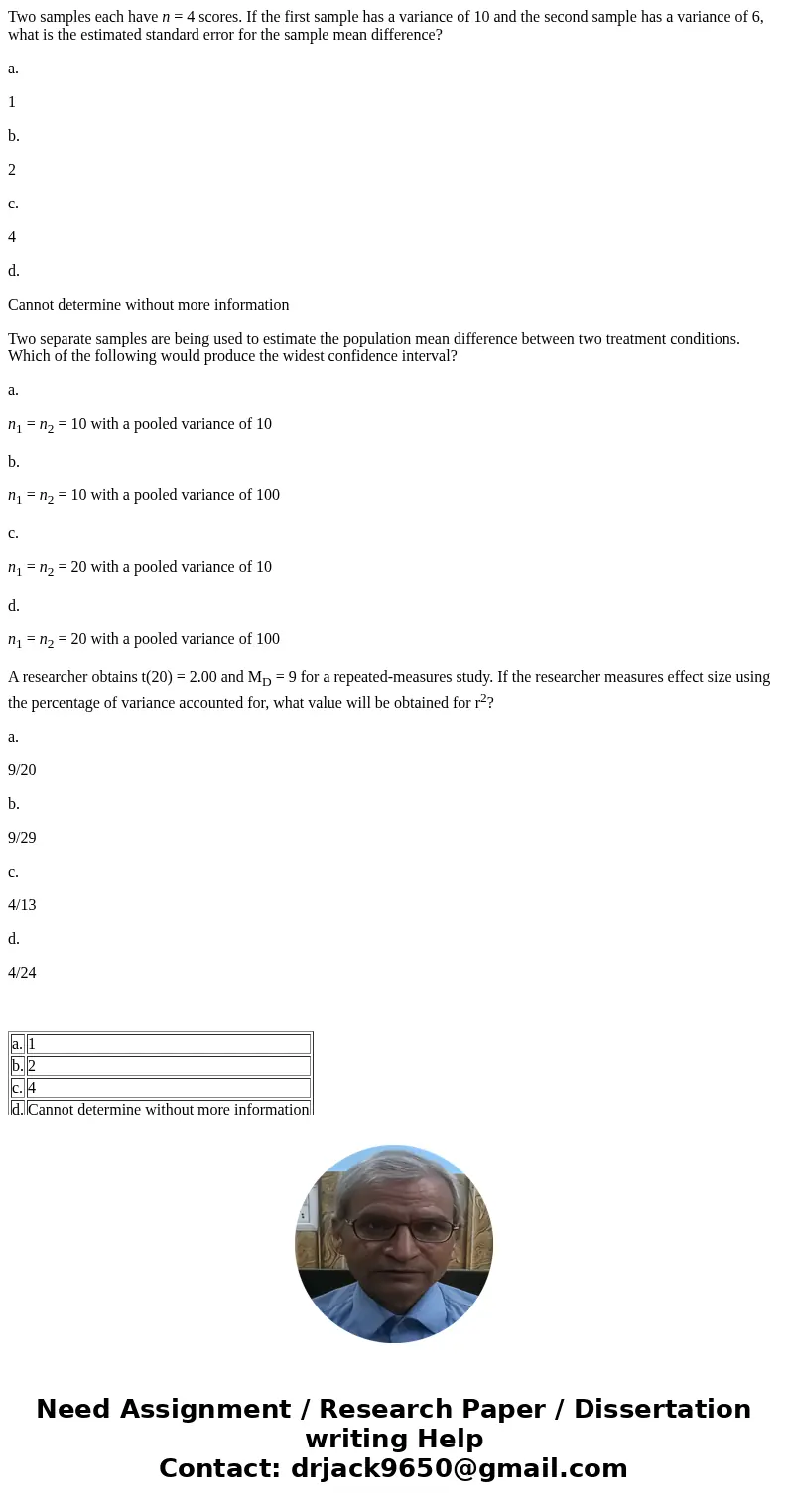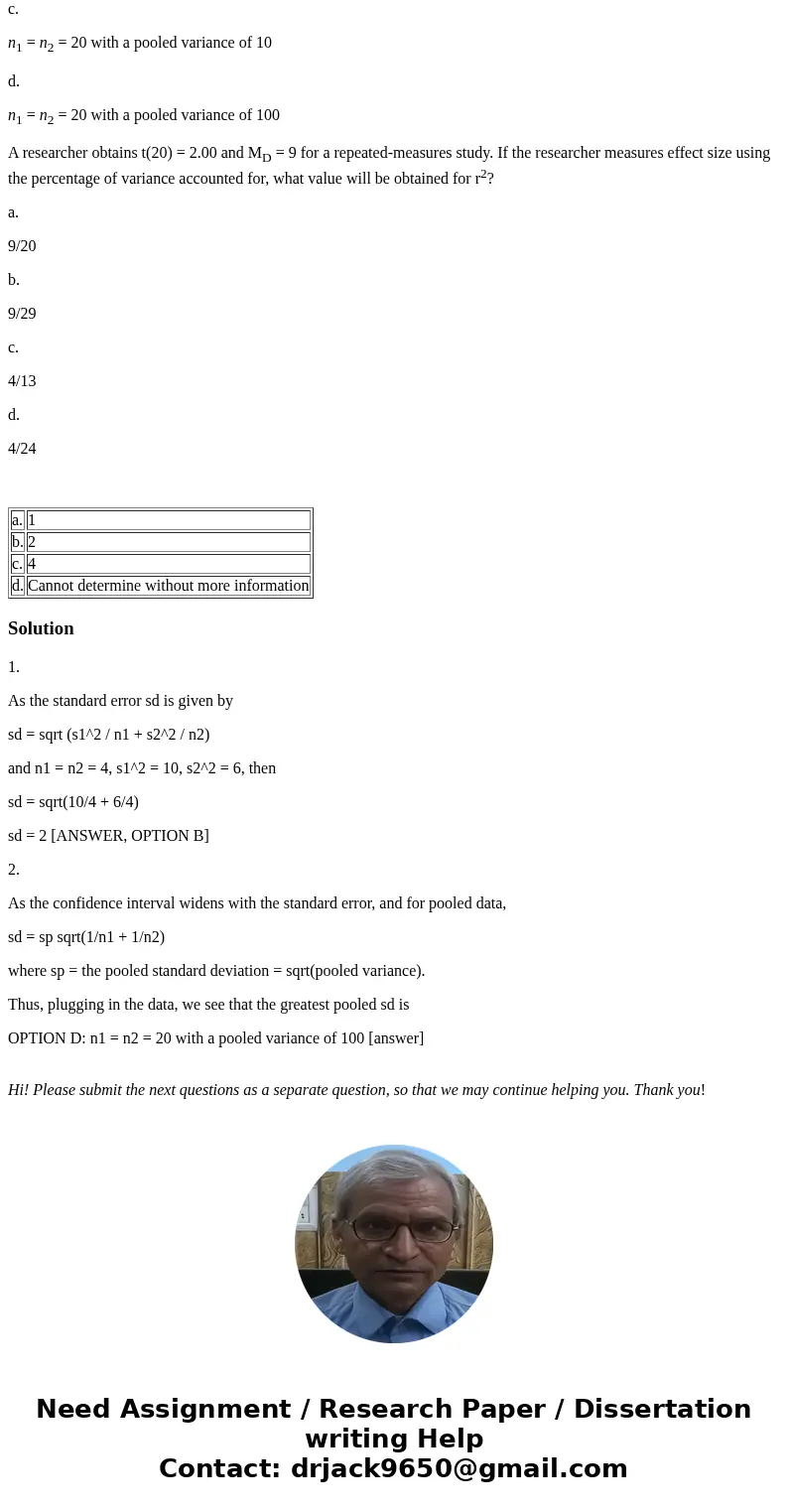Two samples each have n 4 scores If the first sample has a
Two samples each have n = 4 scores. If the first sample has a variance of 10 and the second sample has a variance of 6, what is the estimated standard error for the sample mean difference?
a.
1
b.
2
c.
4
d.
Cannot determine without more information
Two separate samples are being used to estimate the population mean difference between two treatment conditions. Which of the following would produce the widest confidence interval?
a.
n1 = n2 = 10 with a pooled variance of 10
b.
n1 = n2 = 10 with a pooled variance of 100
c.
n1 = n2 = 20 with a pooled variance of 10
d.
n1 = n2 = 20 with a pooled variance of 100
A researcher obtains t(20) = 2.00 and MD = 9 for a repeated-measures study. If the researcher measures effect size using the percentage of variance accounted for, what value will be obtained for r2?
a.
9/20
b.
9/29
c.
4/13
d.
4/24
| a. | 1 |
| b. | 2 |
| c. | 4 |
| d. | Cannot determine without more information |
Solution
1.
As the standard error sd is given by
sd = sqrt (s1^2 / n1 + s2^2 / n2)
and n1 = n2 = 4, s1^2 = 10, s2^2 = 6, then
sd = sqrt(10/4 + 6/4)
sd = 2 [ANSWER, OPTION B]
2.
As the confidence interval widens with the standard error, and for pooled data,
sd = sp sqrt(1/n1 + 1/n2)
where sp = the pooled standard deviation = sqrt(pooled variance).
Thus, plugging in the data, we see that the greatest pooled sd is
OPTION D: n1 = n2 = 20 with a pooled variance of 100 [answer]
Hi! Please submit the next questions as a separate question, so that we may continue helping you. Thank you!


 Homework Sourse
Homework Sourse